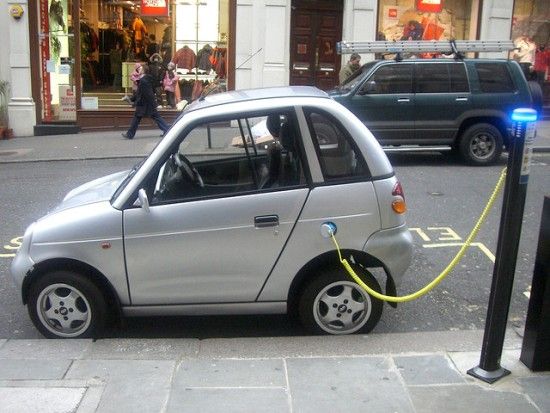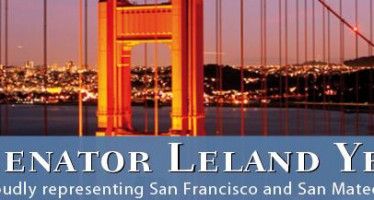Sacramento eyes electric vehicle boost
 With California’s cap-and-trade legislation on the ropes, zero-emissions vehicle quotas have emerged as the next piece of environmental policy up for debate in Sacramento.
With California’s cap-and-trade legislation on the ropes, zero-emissions vehicle quotas have emerged as the next piece of environmental policy up for debate in Sacramento.
A new bill, soon to be introduced by Assemblywoman Autumn Burke, D-Los Angeles, would “require that 15 percent of new vehicles be emission-free in less than a decade, a significant escalation in the state’s efforts to speed the evolution of new car technology,” according to the Associated Press. “Automakers that fail to sell enough electric vehicles would be required to make payments to rivals that do or pay a fine to the state,” the wire noted.
“Under current law, automakers accumulate credits for selling vehicles with cleaner technology and must hit annual targets. Environmental advocates say automakers have stockpiled credits for future use and won’t have sufficient incentive to sell electric vehicles at affordable prices, preventing the state from meeting its goals for greenhouse-gas reduction.”
Industry anxieties
In Silicon Valley and the Bay Area, the mood has shifted somewhat from optimism to concern, with regional opinion leaders mounting a defense of electric vehicles that allows that the rules around them may well need reform. “Despite Californians embrace of EVs, the state is in danger of not meeting its laudable goal of sales of 15 percent of all new cars by 2025, which would equate to roughly 1.5 million cars,” the San Jose Mercury News editorialized. “It’s especially worrisome that sales of electric vehicles increased by only 1.6 percent in California in 2015, and dropped by more than 10 percent throughout the United States.”
Compounding the problem, Californians with electric cars face the prospect of having their high occupancy lane access taken away — a move that would surely depress zero-emissions sales still further. “One of the most successful incentives to date has been the green-sticker program for plug-in hybrids and the white-sticker program for battery electric and fuel-cell vehicles, both of which provide high-occupancy-vehicle-lane access to these cars,” the San Francisco Chronicle warned. “Consumers have cited high-occupancy-vehicle-lane access incentives as a key consideration in their purchase of an electric vehicle. Both programs are set to expire at the end of 2018, and there are no longer any green stickers available unless the cap is raised by the Legislature.”
World watching
As always, national — and international — eyes remained focused on California’s moves in the zero-emissions market. China, whose central planners have looked to cap-and-trade champions like Gov. Jerry Brown and former Gov. Arnold Schwarzenegger for inspiration, has even formulated regulations patterned after the Golden State’s electric vehicle quota system. “The proposed rules will mandate that certain automakers produce or import new-energy vehicles in proportion to the number of fuel-burning autos they sell,” Bloomberg Markets reported, citing a draft document prepared by Beijing’s National Development and Reform Commission. “Companies that fail to achieve carbon dioxide emission reduction targets would be required to buy credits or pay fines of as much as five-times the average price of the credits, the country’s top industry regulator and policy maker said.”
But in spite of the impressive technology and social vogue powering attention and prestige around zero-emissions cars, in the U.S., electric vehicles have only really taken off along the West Coast. “Of the 13,772 cars with plugs sold last month, 7,161 went to buyers in California,” GreenCarReports noted — “exactly 52 percent, or more than the entire rest of the U.S. combined. With cheap gas sustaining a robust market for the SUVs and crossovers buyers favor — models that rarely come with plugs — sales have fallen short of expectations.
Nevertheless, regulators have ensured that electric vehicles won’t be disappearing from showroom floors anytime soon. Automakers “know they must both meet the California ZEV mandate — which until 2018 applies only to Fiat Chrysler, Ford, GM, Honda, Nissan and Toyota — and gain experience for future years in which radically lower emissions will be demanded by regulators worldwide,” the site added. “California provides the most fertile market for those vehicles, and the ‘travel provision’ quirk in its ZEV regulations allows a car sold in that state to fulfill ZEV-sales requirements in 10 other states as well.”
Related Articles
10 quotes from indictment against Sen. Leland Yee
This week State Sen. Leland Yee, D-San Francisco, was arraigned in federal court on charges of working with Chinatown gangsters and brokering arms deals with a Muslim rebel
GOP activists excited about party’s improving prospects in California
When California Republican activists converged on the Anaheim Marriott in mid-September, they experienced something they hadn’t felt in years. Excitement. “It’s
Gavin Newsom rips ‘defeatist Democrats’ who won’t embrace single-payer
Lt. Gov. Gavin Newsom appears comfortable with borrowing from Bernie Sanders’ playbook and embracing single-payer health care in his bid




